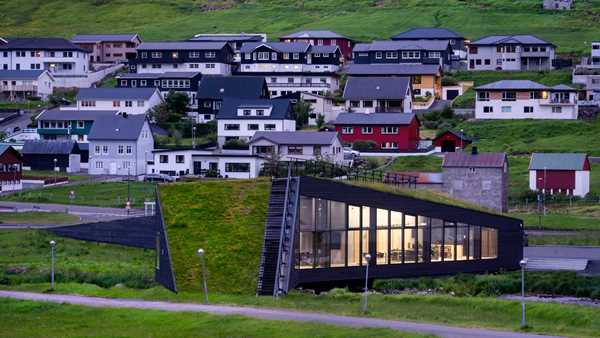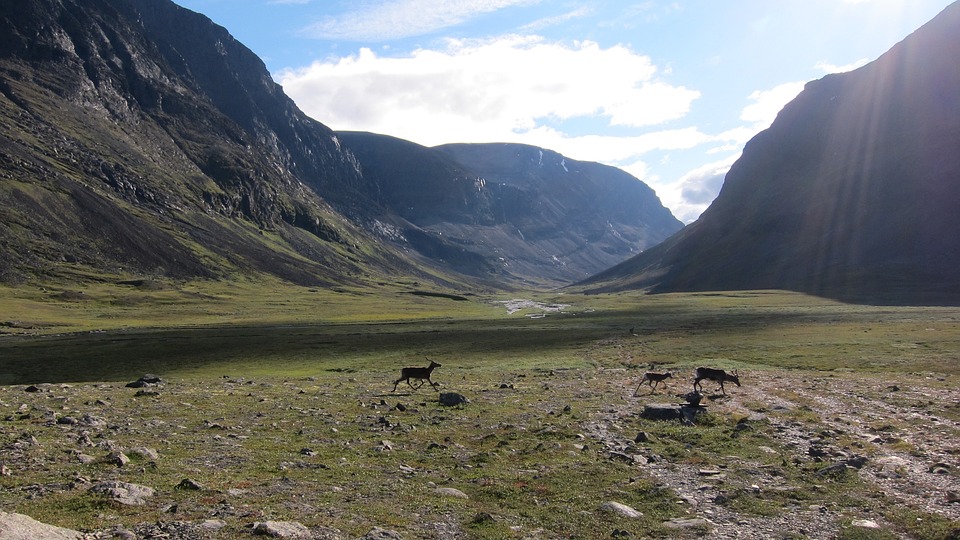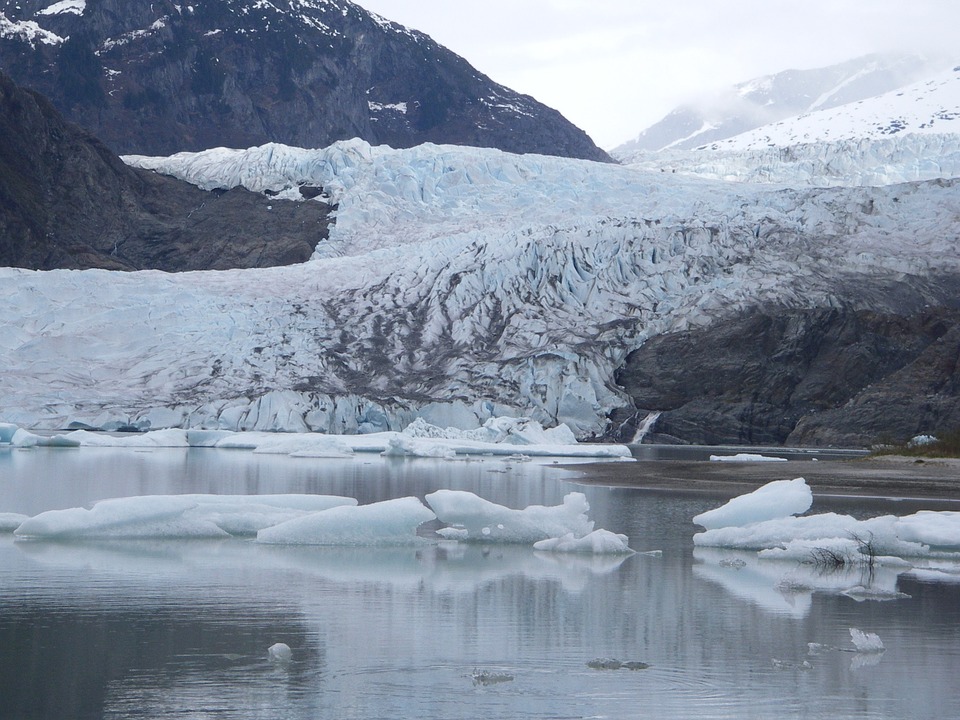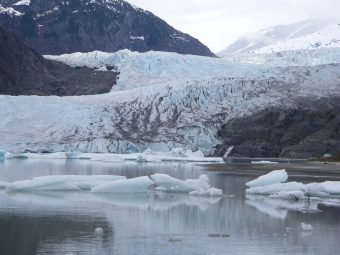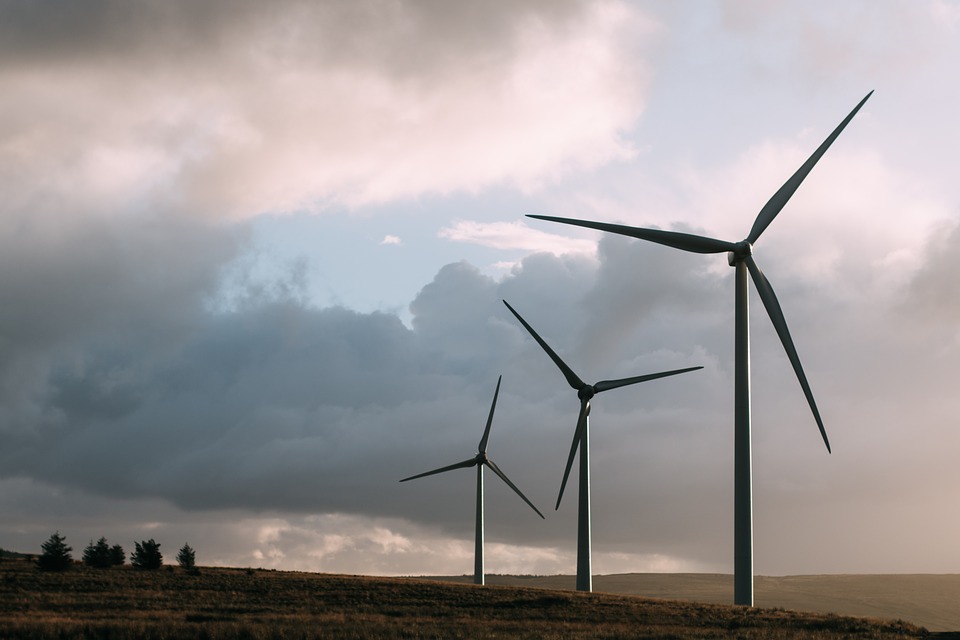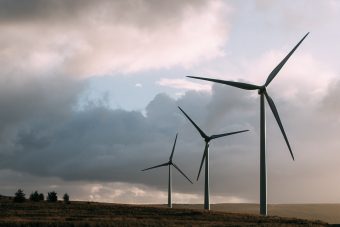
When Copenhagen-based Henning Larsen Architects was tapped to design the Town Hall in Eysturkommuna, the firm knew that there would be no point in trying to compete with the sublime Faroe Islands setting. Sculpted by wind and volcanic forces, the lush Nordic landscape instead provided inspiration for the building, which doubles as a bridge over a river and appears as a green-roofed extension of its surroundings. Blurring the line between nature and building, the Town Hall pays homage to traditional Faroese architecture with a new contemporary twist.

Located in the village of Norðragøta, the Town Hall in Eysturkommuna is a subtle addition to the lush landscape that was created to help revive the local community. With an area of 750 square meters, the building is remarkably small for a town hall, yet what the structure lacks in size it makes up for in dramatic views. Doubling as a bridge, the angular building unites what used to be two separated municipalities and is partly wrapped in full-height glazing to frame stunning vistas of mountains and water. A circular mirror-lined glazed opening was also inserted into the floor to allow views of the rushing river below.

“A central theme in traditional Faroese architecture is the blurred line between nature and building, the fact that the spectator has difficulties distinguishing where the landscape ends and the building begins,” explains Ósbjørn Jacobsen, Partner at Henning Larsen. “The primary conceptual idea behind the design of the town hall is driven by the notion of this fleeting line between landscape and building. I believe that could be one way to approach modern Faroese architecture.”
The public is not only invited to enjoy the interior of the Town Hall, but they are also welcome to use the terraces and green roof for picnics or to even swim in the river. To heighten the building’s connection with the site, artist Jens Ladekarl Thomsen created an exterior sound and light installation that draws from the sounds and structure of the local neighborhoods and nature and “lets passersby believe the ‘house speaks’ of its surroundings.”
Source: Inhabitat


